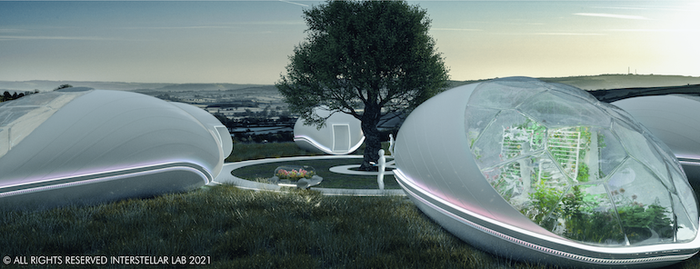Preparing for life on Mars may just save our climate-challenged planet and its people.
September 1, 2021

The evolving Artemis program intends to send the first woman and next man to the Moon. Artemis is the name of NASA's program to return astronauts to the lunar surface by 2024. The U.S. institution will collaborate with commercial and international partners to establish a sustainable base for further exploration of the moon by the end of the decade. This knowledge and experience should allow for the second part of the Artemis program, namely, to send astronauts to Mars.
Be it the Moon or Mars, space travel and colonization raises several critical questions: What will the astronauts wear on the moon and Mars, where the thin atmosphere allows more radiation from the Sun and cosmic rays to reach the surface? Equally important is how will food production be achieved, as it will be impossible to bring enough food from Earth to Mars and back.
Food Production
NASA is already addressing the first question, as was covered in a recent DN story. To answer the second query, a visit to Interstellar Lab is needed. The company, based in France, is developing and building closed-loop sustainable living systems on Earth and in space. Interstellar Lab focuses on creating space-grade food production systems and habitat modules for humans. On Earth, these systems might well prove helpful for the current climate crisis and the need for new food production systems. In space, the need for closed-loop life support systems for lunar missions in the context of NASA’s Artemis Program is equally as critical.
Interstellar Lab used a virtual twin experience to simulate, test, and optimize the performance of its BioPod dome and biological systems. BioPod is an inflatable dome measuring 6 meters (19.7 feet) wide, 10 meters (32.8 feet) long, and 4.5 meters (14.8 feet) high that uses composites for the solid technical base and soft plastic membranes for the primary and outer shell. It is designed to revolutionize food production by combining advanced crop cultivation technology with predictive monitoring to grow diverse crops and plants that would not otherwise survive in a traditional indoor farming setup.
The digital twins were created using Dassault Systèmes’ 3DEXPERIENCE Platform, which provided one digital environment containing all the latest project data from design teams worldwide. The virtual twin was needed to simulate and test the performance of BioPod’s structure in extreme climates and its biological systems, such as the optimal levels of oxygen, carbon dioxide, and light levels for plants to grow.
As BioPod evolves, Interstellar Lab will use the virtual twin to experience and monitor the dome’s operations and maintenance and gather data around food production and the environment. The Dassault Systemes platform will also facilitate communication with suppliers as the company designs future modules, scales up manufacturing and outsourcing, and enables Interstellar Lab to create photo-realistic renderings from BioPod’s 3D model.

John Blyler is a Design News senior editor, covering the electronics and advanced manufacturing spaces. With a BS in Engineering Physics and an MS in Electrical Engineering, he has years of hardware-software-network systems experience as an editor and engineer within the advanced manufacturing, IoT and semiconductor industries. John has co-authored books related to system engineering and electronics for IEEE, Wiley, and Elsevier.
About the Author(s)
You May Also Like





